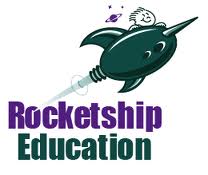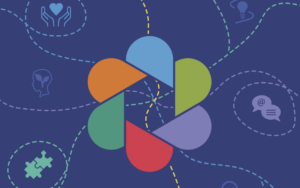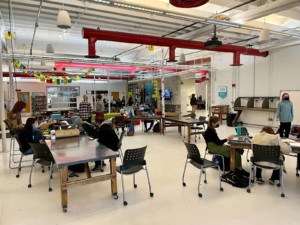An Inside View of Blended Integration at Rocketship Education

By guest author Charlie Bufalino, National Development Associate and former Online Learning Specialist at Rocketship Education
At Rocketship Education our mission is to close the achievement gap within our lifetimes. The three pillars of our model are: parent and community engagement, rich professional development for our teachers and school leaders, and individualized learning for our students. Toward the end of individualized learning, we utilize a blended learning model in our K-5 elementary schools. Students use technology and small group tutoring in our Learning Lab for individualized basic skills practice, allowing our teachers to focus on higher-order thinking skills in the classroom.
As the blended learning movement continues to gain momentum, the issue of integration will become increasingly crucial. At the heart of a successful blended learning model is a tight alignment between classroom instruction and online learning. At Rocketship, we have always believed that for our blended model to be truly effective it must be complementary: Our Learning Lab must provide our teachers with meaningful and actionable data to help inform their instruction; and, our teachers must have influence over what basic skills students need to master in the Learning Lab. Bridging this gap requires a technical infrastructure that can integrate the classroom and the lab.
Lately, more and more blended schools are choosing to implement multiple online content providers to further individualize and personalize their students’ learning. This is fundamentally necessary, but it presents several problems not experienced in more traditional models that utilize a single provider:
- Logging in: Should we really expect students to remember 6-7 different logins and passwords in order to access their programs? Should teachers and lab staff have to constantly monitor whether students are using the correct program?
- Account management: Why should someone have to manually edit accounts each time a new student arrives, leaves, or changes classes? Imagine what a hassle this is for a single classroom, a whole school, a district?
- Meaningful data: How can we expect teachers to analyze data from multiple programs that utilize different metrics populated in different reports? Further, how can teachers compare and analyze the progress of their students if they are all using different programs?
- Goal-directed assignability: How can teachers have input and control over what content gets queued up for their students in their online programs? I’m not referring to the providers that let a teacher manually re-order the already existing scope and sequence. What I’m talking about is a mechanism that allows a teacher or system to simply list the skills, goals, or standards that a student needs to master, and let the program then take that input and adapt the content to help students meet their individualized goals.
Some of these problems are logistical issues that quickly make models un-scalable, while others make it difficult and time consuming for teachers to determine exactly what it is their students are learning and what they need to work on next.
Last year at Rocketship, we tackled these problems. With help from the Gates Foundation, we developed a technical infrastructure that created a portal that automatically signed our students into their correct programs; synched with our Student Information System to automatically provision accounts; pulled specific metrics from individual programs and combined them into universal reports allowing our teachers access to meaningful, actionable data; and even began to align online content with what students were covering in the classroom.
Next school year, we are partnering with a company called Junyo to further enhance our technical infrastructure, providing our teachers with even more advanced analytics and more granular goal-directed assignability for our students’ Learning Lab content. We’re very excited to continue this important work.
None of this is to say that this is an easy or rapid process, but with companies like Junyo bringing their talent to such a critical problem in the edtech space, the future looks promising. Truly integrated systems will encourage more teachers, school administrators, and industry stakeholders to further invest in the potential of blended learning, changing educational outcomes for students everywhere.
This blog first appeared on EdWeek.






0 Comments
Leave a Comment
Your email address will not be published. All fields are required.